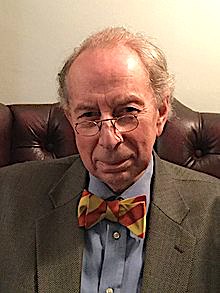PROTECT YOUR DNA WITH QUANTUM TECHNOLOGY
Orgo-Life the new way to the future Advertising by AdpathwayScott Adams, the mind behind “Dilbert,” has made a striking comparison that might linger in the political landscape as California Governor Gavin Newsom navigates his career. In a recent social media clip, Adams likened Newsom to none other than the infamous Joker, Batman’s arch-nemesis. With his gleaming grin and slicked-back hair, Newsom embodies what many perceive as chaotic tendencies that have contributed to the turmoil in the state.
Adams stated, “The way people look is hugely influential.” He asserted that Newsom not only resembles a movie villain but could easily step into a role as the Joker with minimal makeup. This commentary raises an essential point about appearance and public perception in politics. The governor’s looks, combined with his governing style, create an impression that some constituents may find unsettling.
Adams’ direct observation of Newsom’s appearance and mannerisms speaks volumes. He paints a vivid picture of someone who wears the guise of a charming leader while steering California into troubling waters. This duality—between charisma and chaos—challenges the narrative that politicians can be trusted solely based on their image. Adams suggests that if Newsom were to take on a villainous role in film instead of pursuing political aspirations, it might serve him and the state better.
Aside from appearances, there remain pressing questions about Newsom’s accomplishments. The parody isn’t simply about looks; it digs deeper into the scrutiny of his effectiveness as a governor. What has he done to uplift California’s dire circumstances? The absence of solid achievements raises doubts about his leadership. Instead of discussing real results, Newsom often resorts to a theatrical approach, as seen in his appearance on the podcast “All the Smoke,” where he attempted to downplay his privileged background. Such efforts did not resonate well, drawing mockery from figures like Vincent Oshana.
The reflection on Newsom’s character leads to further scrutiny. His perceived alignment with the Democratic Party suggests a willingness to absorb and promote any agenda that may elevate his standing. This brings to mind former President Joe Biden, whose political career has often been criticized for its lack of genuine principles, serving instead as a vessel for party ideals. Adams hints that Newsom, too, may prioritize power over authenticity, making it difficult for constituents to trust his motives.
Ultimately, Adams strikes at the heart of an ongoing debate in American politics: the intersection of appearance, behavior, and accountability. As Newsom chases higher ambitions, he may unwittingly reinforce the stereotype of the ambitious politician who prioritizes image over integrity. The possibility of stepping into a fictional role may serve as a better alternative for a leader that many view as untrustworthy. Adams’ comparison is not merely satire; it encapsulates a critical commentary on the state of California under Newsom’s rule, where the façade of leadership is juxtaposed against the backdrop of a turbulent reality.
"*" indicates required fields


 12 hours ago
6
12 hours ago
6


















.jpg)






 English (US) ·
English (US) ·  French (CA) ·
French (CA) ·